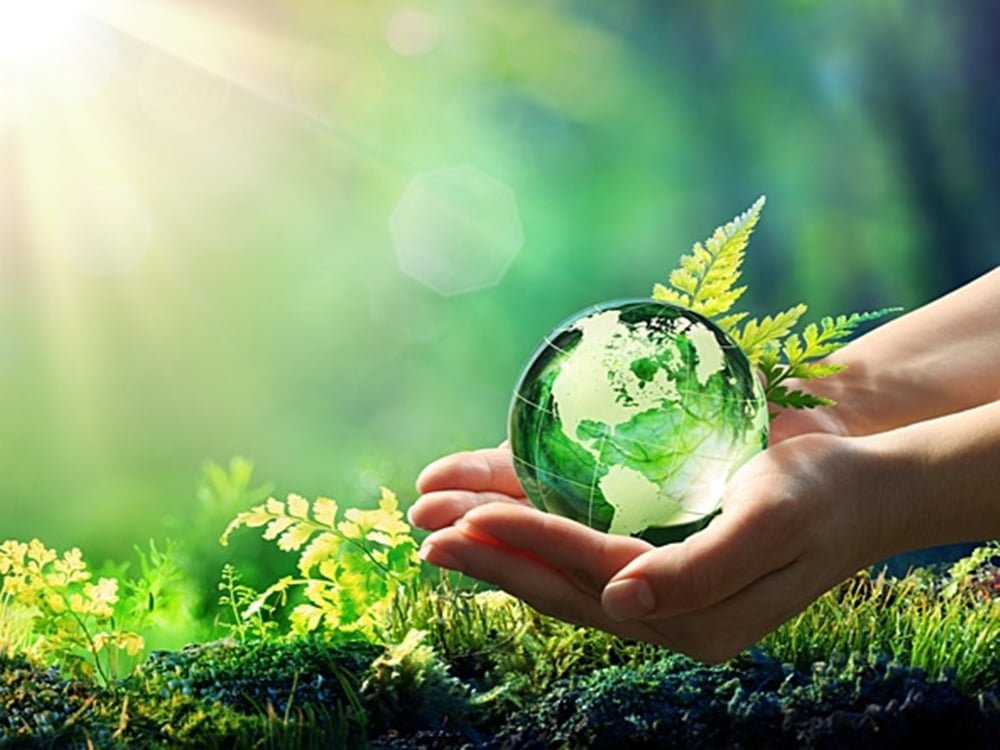In broad terms, sustainable development is a process that aims for human well-being and economic development, whilst ensuring that ecological systems are in balance. To be successfully achieve this necessary and challenging change, it is vitally important for everyone to take responsibility and do what is possible from their perspective.

What is sustainable development?
Sustainable development is commonly described as finding a balance between ecology, the economy and society – three interdependent areas in a complex system. Yet it is important to remember that neither society nor the economy would exist without diverse ecology.

As a designer, there are significant possibilities to influence development but it always helps if the work of designers is done in partnership with governments, businesses and consumers. When entities in different areas of expertise and responsibility communicate effectively with each other, shared knowledge can often lead to greater understanding.
“Sustainable development is development that meets the needs of the present without compromising the ability of future generations to meet their own needs”
-The Brundtland Commission definition from 1987
People + Planet + Business = Sustainable Development
Designers do not need to become experts in environmental and social issues to make a difference. A basic awareness and understanding of these areas, however, increases their ability to do the right thing from the beginning.

People: Understanding the needs of stakeholders
Pertains to social, fair and beneficial business practices towards labour, stakeholders and the community and region in which a company conducts its business. Within the design process, the needs, key activities, environments, interactions and aim of users, network partners and stakeholders are considered.
Planet: Designing environmentally friendly solutions
“Planet” refers to sustainable environmental practices. The business endeavours to benefit the nature as much as possible or at the least do no harm and minimise environmental impact. The “Planet” principle supports the design of an environmentally friendly solution, integrating a lifecycle approach and aiming to minimise the environmental impact of the business.
Business/profit: Creating economic, social and ecologic benefits
Profit is the economic value created by the organisation for the host community. The business (model) takes into account social, economic and environmental costs and benefits.
Sustainable Development Goals: Framework for Strategic Sustainable Development Goals
On 25 September 2015, at the 2015 World Summit on Sustainable Development at the United Nations Headquarters in New York, the 17 “Sustainable Development Goals” were adopted accordingly by the United Nations General Assembly. This resolution is considered to be the most ambitious agenda “against poverty and for the planet” ever decided upon
The SDGs are the outcome of a global political process, and the international development after 2015, which brought an intensified opposition against multi-national agreements. However, the SDGs are the best basis we have for policies to work for a sustainable future. It is thus in the hands of the UN member states and all societal, private, and corporate actors to focus, in addition to the 169 SDG targets, on pressures and impacts in their sustainability policies and strategies. For doing so, actors need support to identify the mechanisms leading to unsustainability and principles describing how a certain system can be more sustainable. The Framework for Strategic Sustainable Development (FSSD) describes these mechanisms, these sustainability principles, and strategies to implement them, and is concrete enough to support decision-makers, helping them choose the most sustainable activities and formulate relevant questions. The FSSD-sustainability principles can improve our understanding of sustainability and the roots of unsustainability. If these principles are considered, the outcome is a sustainable system that leads to improved sustainability performance. The FSSD sustainability principles state that in a sustainable society, nature is not subject to systematically increasing:
- the concentrations of substances extracted from the Earth’s crust (e.g., fossil carbon, metals);
- the concentrations of substances produced by society (e.g., nitrogen compounds, endocrine disrupters);
- the degradation by physical means (e.g., large-scale clear-cutting of forests, over-fishing); and, in such a society,
- people are not subject to conditions that systematically undermine their capacity to meet their needs (e.g., decreasing trust through abuse of political and economic power). This fourth principle has been further developed to argue that, in a sustainable society, people are not subject to structural obstacles to health (e.g., dangerous working conditions, insufficient rest times), influence (e.g., by suppression of free speech, neglect of opinions), competence (e.g., by obstacles for education, insufficient development options), impartiality (e.g., by discrimination, unfair treatment), and meaning (e.g., by suppression of cultural expression).
These FSSD-principles can be used by all actors who want to implement the SDGs in their area of responsibility, as these principles allow to address sustainability pressures and impacts missing in the SDGs.
Two essential characteristics must not be forgotten within the discussion about sustainable development: first, all human systems (e.g., societies, communities, economies, and markets) are part of the biosphere. The embedded nature of these systems in the natural environment is crucial and calls upon humans to respect the earth´s ecological carrying capacity. The fundamental laws of thermodynamics show that all processes are irreversible and dependent on energy, which is provided by renewable or fossil energy sources available in nature. The embedded nature of this system can be called “physicity”, a term that reveals the physical dependence of human beings and human systems on these energy sources. Second, sustainability is a system property and not attributable to the characteristics of a single object alone; instead, it is dependent on both the characteristics of this single object and its relations to other objects and systems.

